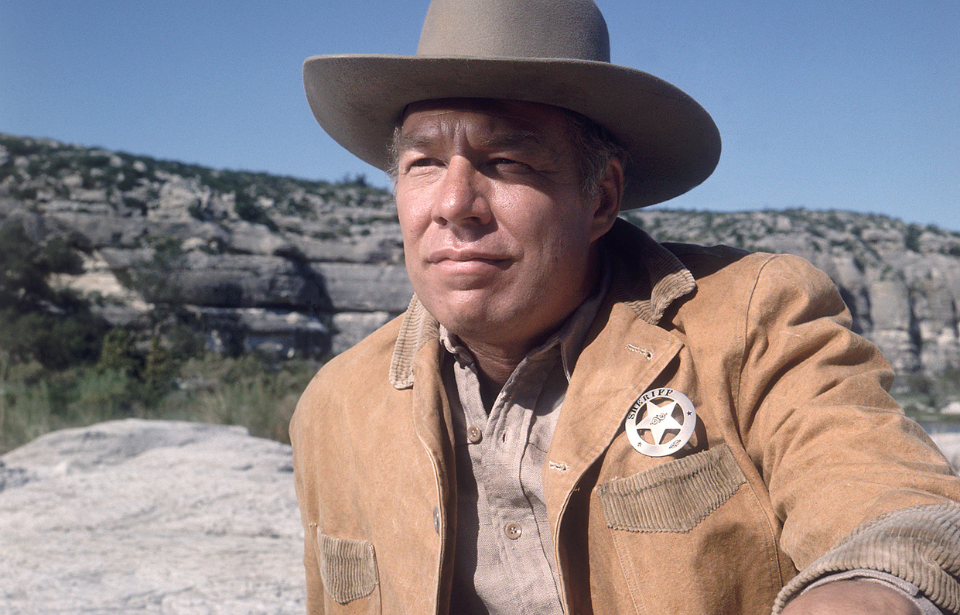Oscar-winning actor George Kennedy became well known for his portrayals of tough, no-nonsense characters in both movies and television. His commanding presence on screen was shaped by real-life experience—he spent 16 years serving in the U.S. Army before an unexpected injury brought his military career to an early end. The injury cut short what might have been a lifelong military path, leaving many to wonder: would Kennedy have continued his service if not for that setback, or was his true calling always meant to be in Hollywood?
George Kennedy’s early beginnings in show business
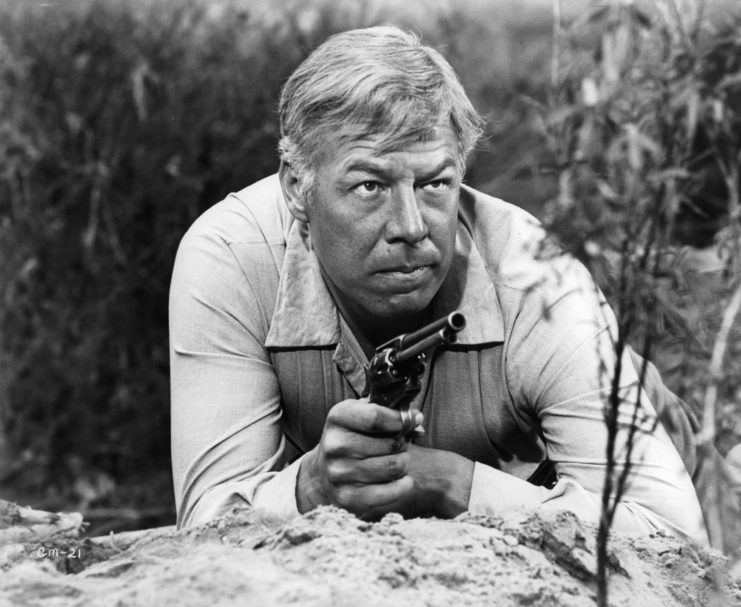
George Kennedy was born on February 18, 1925, in New York City, New York, into a family deeply connected to the entertainment world. His father was a musician and orchestra leader, and his mother had been a ballet dancer, so he was introduced to show business at a young age.
Kennedy made his stage debut at just two years old in a touring production of Bringing Up Father. Unfortunately, his father passed away when he was four, leaving his mother to raise him alone.
Even with this loss, Kennedy stayed focused on his growing career, performing on the radio from the age of seven until the start of World War II. After graduating high school, he decided to join the U.S. Army.
Serving under Gen. George Patton
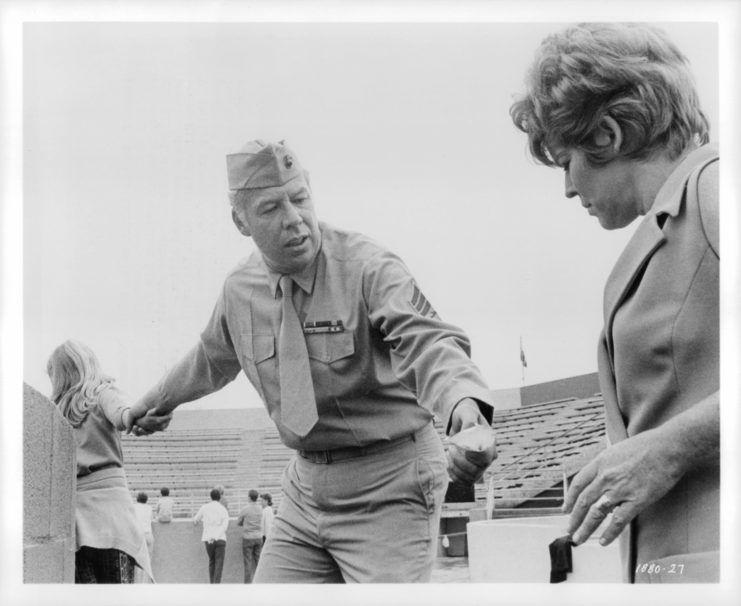
George Kennedy initially tried to enlist in the US Army Air Forces, but his physical stature posed problems.
“I’m six-foot-four, and even in those days I weighed 210 pound,” Kennedy once reminisced. “I was interested in airplanes then, and I’m interested in airplanes now. The best explanation came from a master sergeant in the Air Force. He said, ‘George, there’s nothing wrong with you. But we can either put you in an airplane or we can put a 200-pound bomb in an airplane. We’d rather put the bomb in the airplane.'”
Instead, Kennedy enlisted as an infantryman in the US Army, serving under Gen. George Patton, whom he’d later portray in 1978’s Brass Target. One of the most notable engagements he participated in was the Battle of the Bulge. Reflecting on the war later in life, he commented on the danger he and his fellow servicemen faced.
“Kids who had never done anything more dangerous than play kickball in the street were shooting BAR’s and mortars and killing each other… The war was one horrendous surprise after another. I can’t think of anything I did during the war that did not involve death,” he said.
Kennedy’s time with the military came to an end after 16 years due a back injury he suffered in the late 1950s. At the time of his retirement, he’d achieved the rank of captain and earned a number of recognitions, including two Bronze Stars.
Developing the US Army Information Office
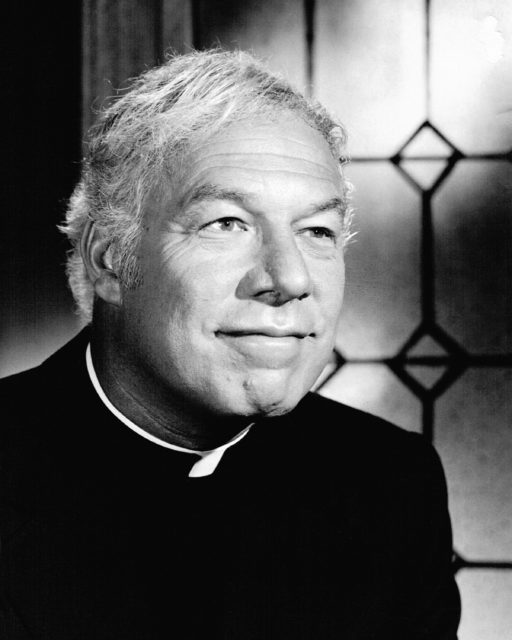
While in the Army, George Kennedy used his background as a radio actor to become a disc jockey for the Armed Forces Network (AFN), working in an environment similar to the one portrayed in the 1987 film Good Morning, Vietnam.
This job had a lasting impact on both the Army and Kennedy himself. For the military, it helped contribute to the creation of the US Army Information Office, which supported the entertainment industry with technical expertise. For Kennedy, it provided important experience that later helped shape his acting career after he left the service.
George Kennedy always played the tough guy
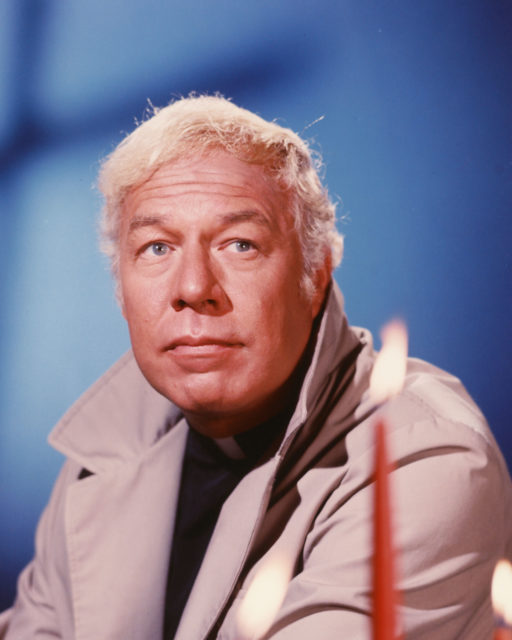
After leaving the Army, George Kennedy worked as a technical advisor on The Phil Silvers Show (1955–59). In this position, he occasionally played small, uncredited characters, sparking his interest in pursuing a professional acting career. This led to supporting roles in various television series, where he often played cowboys, outlaws, or lawmen.
Although Kennedy had made several TV appearances, his film debut came in the early 1960s. Among the notable films from his early career are Charade (1963), Flight of the Phoenix (1966) and The Dirty Dozen (1967). However, his breakthrough role came with Cool Hand Luke (1967), earning him an Academy Award for Best Supporting Actor. During this period, he acted alongside some of Hollywood’s biggest stars, including Paul Newman, Cary Grant, Kirk Douglas and Joan Crawford.
Kennedy appeared in over 200 movies and TV shows
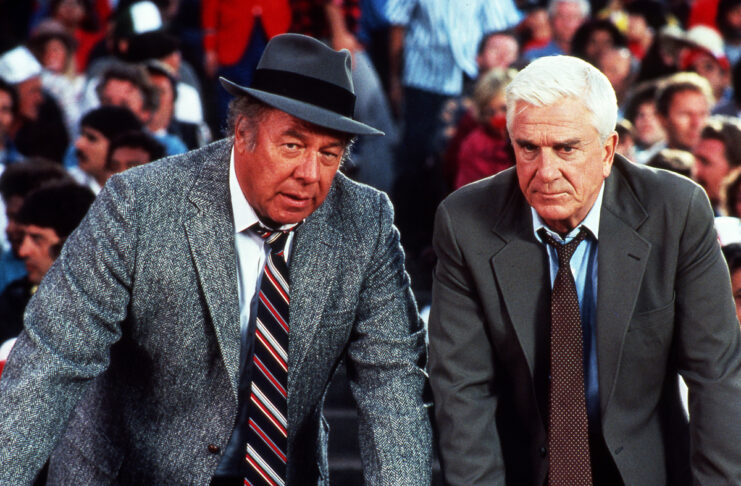
During the 1970s and ’80s, George Kennedy’s career hit a rough patch, with most of his roles coming from B-rated and low-budget films. To stay active in the industry, he shifted his focus to television. But things took a turn for the better in the late 1980s and into the ’90s, when he experienced a career resurgence thanks to his role in the hit parody Naked Gun films, which introduced him to a whole new generation of fans.
Over the course of his career, Kennedy racked up more than 200 film and television credits. He officially stepped away from acting after appearing in The Gambler in 2014. Two years later, he passed away in Middleton, Idaho, at the age of 91.
